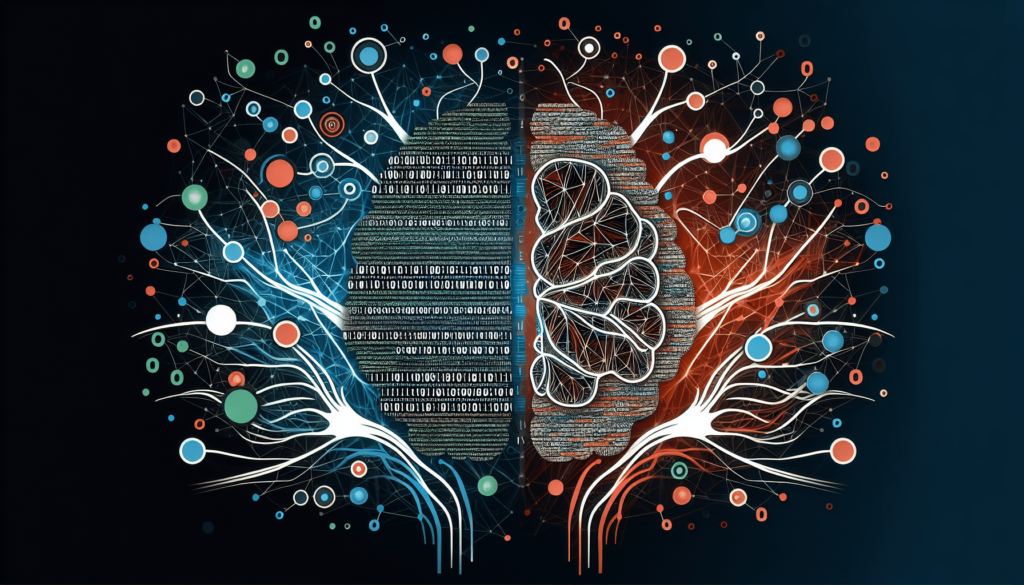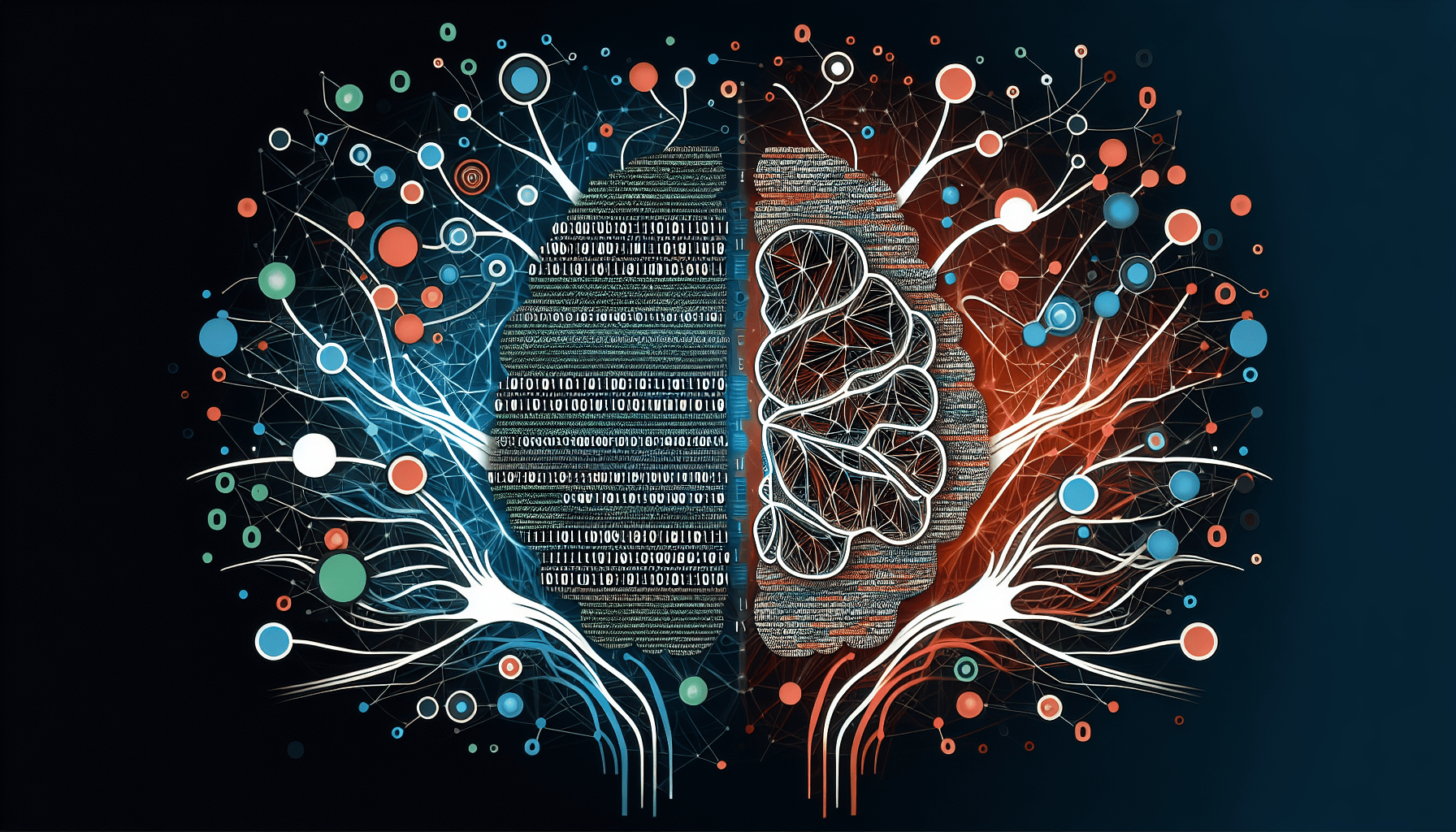Have you ever wondered about the relationship between machine learning and AI? It’s a question that often sparks curiosity and confusion. In this article, we’ll shed light on the intriguing debate, exploring whether machine learning is the foundation of AI or whether AI predates the development of machine learning. Get ready to embark on a journey of discovery as we unravel the intricate connection between these two revolutionary technologies.

Defining Machine Learning and Artificial Intelligence
Machine Learning
Machine learning is a field of study within the broader realm of artificial intelligence (AI) that focuses on the development of algorithms and statistical models that allow computer systems to learn and make predictions or decisions without being explicitly programmed. It is concerned with building systems that can automatically improve their performance through experience and data analysis. In other words, machine learning enables computers to learn from past data and adapt their behavior or make predictions accordingly.
Artificial Intelligence
Artificial intelligence, on the other hand, refers to the development of computer systems or machines that can perform tasks that would typically require human intelligence. AI aims to create intelligent machines that can simulate human thinking, reasoning, problem-solving, and decision-making capabilities. It encompasses a wide range of technologies and techniques, including machine learning, natural language processing, computer vision, robotics, and more. AI strives to replicate or augment human-like intelligence in machines, enabling them to interpret, understand, and interact with the world in a meaningful way.
Historical Development
Early Concepts of AI
The idea of artificial intelligence dates back centuries, with philosophical and mythical influences from ancient times. However, it was not until the mid-20th century that significant progress in the field began. Early pioneers such as Alan Turing and John McCarthy laid the groundwork for AI by conceptualizing the notion of machines that could mimic human intelligence. Their work introduced the concept of intelligent machines through theoretical frameworks and the development of early computer programs.
Emergence of Machine Learning
While the concept of AI had been explored for several decades, machine learning emerged as a distinctive field in the late 20th century. The development of computers with increased computational power and the ability to process large amounts of data led to breakthroughs in the field. Researchers began to focus on building algorithms and models that could automatically learn patterns and make predictions from data.
AI and Machine Learning Integration
In recent years, there has been a significant convergence between AI and machine learning. Machine learning algorithms and techniques have become a fundamental part of AI systems, enabling them to learn and improve their performance through experience and data analysis. Machine learning has become an essential tool for creating intelligent systems and enhancing the capabilities of AI technologies.
Understanding Machine Learning
Algorithms and Statistical Models
Machine learning algorithms form the foundation of the discipline. These algorithms are mathematical models or computational methods that enable machines to learn from data and make predictions or decisions. There are various types of machine learning algorithms, including supervised learning, unsupervised learning, reinforcement learning, and deep learning. Each algorithm type has its own approach to learning and extracting insights from data.
Training Data
To teach a machine learning algorithm, training data is required. Training data consists of examples or instances that represent the problem or task the algorithm aims to learn. The algorithm learns from this data by identifying patterns, relationships, and trends. The quality and quantity of training data play a crucial role in the performance and accuracy of the machine learning model.
Feature Extraction
In machine learning, feature extraction involves selecting or transforming relevant features from the raw input data. Features are specific attributes or characteristics that represent the input data and are used as input to the machine learning algorithm. Feature extraction helps in reducing the complexity of the data and capturing critical information that influences the learning process and the predictions made by the model.
Prediction and Decision-making
Once the machine learning algorithm has been trained using a sufficient amount of data, it can make predictions or decisions based on new, unseen data. The algorithm uses the patterns and relationships it has learned during the training phase to generalize and make accurate predictions or decisions. The output of the algorithm can vary depending on the type of problem being solved, ranging from classification (categorizing inputs into predefined classes) to regression (predicting continuous values) and beyond.
Understanding Artificial Intelligence
Capability of Intelligent Reasoning
Artificial intelligence aims to replicate human-like reasoning and problem-solving capabilities in machines. AI systems are designed to process and interpret information, make logical deductions, and draw meaningful conclusions. Through the use of algorithms, AI can reason and analyze complex situations, making it capable of understanding, learning, and adapting in dynamic environments.
Embodied Cognition
Embodied cognition is a concept within AI that emphasizes the importance of physical interactions and sensory experiences for intelligent systems. This approach suggests that AI should not be limited to processing abstract information but should also be able to interact with the world and gather sensory feedback. By incorporating embodied cognition, AI systems can better understand and navigate their surroundings.
Natural Language Processing
Natural language processing (NLP) focuses on enabling machines to understand and interpret human language. AI systems equipped with NLP techniques can understand and generate human language, allowing for seamless communication between humans and machines. NLP finds applications in various domains, such as chatbots, voice assistants, language translation, sentiment analysis, and information extraction.
Computer Vision
Computer vision is a field within AI that deals with enabling machines to understand and interpret visual information, similar to how humans perceive and process images. Through computer vision techniques, AI systems can analyze and interpret images or videos, recognize objects and patterns, and extract meaningful information. Applications of computer vision range from autonomous vehicles to facial recognition systems and object detection.
Robotics
Robotics is the application of AI and machine learning techniques to create intelligent and autonomous physical systems or robots. These robots are designed to interact with the physical world, perceive their surroundings, and make decisions based on the data they receive. Robotics integrates various AI components, such as computer vision, natural language processing, and machine learning, to enable robots to perform complex tasks independently.

Relationship between AI and Machine Learning
AI as a Subset of Machine Learning
Machine learning can be seen as a subset of AI since it is a key component in creating intelligent systems. AI encompasses a broader scope, including various techniques and technologies beyond machine learning. Machine learning algorithms and models help provide the learning and predictive capabilities required by AI systems. Thus, machine learning plays a crucial role within the broader field of AI.
Machine Learning as a Subset of AI
On the other hand, machine learning is a specific branch of AI that focuses primarily on the development of algorithms and models that allow machines to learn from data and improve their performance without explicit programming. While machine learning is an important aspect of AI, it is not the sole component. Other fields within AI, such as natural language processing, robotics, and computer vision, contribute to the overall capabilities of AI systems.
Interdependency and Synergy
Although AI and machine learning can be seen as subsets of each other, they are also highly interdependent and synergistic. AI systems typically incorporate machine learning algorithms to learn from data and make predictions or decisions. At the same time, machine learning algorithms benefit from the advancements and techniques developed within the broader field of AI. This interplay between AI and machine learning leads to advancements and breakthroughs in both disciplines.
Applications of Machine Learning
Pattern Recognition
Machine learning algorithms excel at recognizing and identifying patterns in data. This capability finds numerous applications in various fields, such as image and speech recognition, fraud detection, sentiment analysis, and predictive analytics. By learning patterns from historical data, machine learning models can identify similar patterns in new data and make accurate predictions or classifications.
Recommendation Systems
Recommendation systems are a prevalent application of machine learning that helps users discover new products, services, or content based on their preferences and past behavior. These systems analyze user data, such as browsing history, purchase history, and ratings, to make personalized recommendations. Machine learning algorithms power these systems by continuously learning and adapting to individual user preferences and providing suggestions accordingly.
Natural Language Processing
Machine learning is crucial in natural language processing tasks, such as sentiment analysis, text classification, machine translation, and chatbot interactions. By training machine learning models on large amounts of text data, these models can understand and generate human language, enabling applications like voice assistants, language translation services, and text-based customer support systems.
Computer Vision
Computer vision applications heavily rely on machine learning to recognize and interpret visual data, such as images and videos. Machine learning models trained on vast amounts of labeled images can accurately identify objects, detect and track motion, and even understand the context within images. Computer vision is utilized in areas such as autonomous driving, surveillance systems, healthcare imaging, and augmented reality.
Anomaly Detection
Machine learning algorithms and statistical models are valuable in detecting anomalies or outliers in datasets. Anomalies are data points that deviate significantly from the norm or expected behavior. Anomaly detection has applications in various domains, including fraud detection in financial transactions, network intrusion detection, equipment failure prediction, and quality control in manufacturing.
Fraud Detection
Machine learning plays a crucial role in fraud detection across industries. By analyzing historical transaction data and identifying patterns indicative of fraudulent behavior, machine learning models can automatically detect and flag potentially fraudulent activity. These models continuously learn and adapt to new fraud patterns, enabling organizations to stay one step ahead of malicious actors and protect their systems and customers.
Applications of Artificial Intelligence
Digital Assistants
Digital assistants, such as Amazon Alexa, Apple’s Siri, and Google Assistant, are ubiquitous AI applications. These intelligent voice-controlled systems utilize natural language processing, speech recognition, and machine learning to provide users with information, perform tasks, and interact seamlessly with various devices and services. Digital assistants have become an integral part of smart homes, smartphones, and other IoT devices.
Autonomous Vehicles
The development of self-driving or autonomous vehicles relies heavily on AI technologies. By incorporating advanced computer vision, machine learning, and decision-making algorithms, autonomous vehicles can perceive their surroundings, interpret traffic signs, detect and avoid obstacles, and make real-time decisions. AI enables autonomous vehicles to navigate complex road conditions while improving safety and efficiency.
Smart Home Technologies
AI powers various smart home technologies, making our living spaces more convenient and efficient. AI-enabled devices, such as smart thermostats, lighting systems, and security cameras, can learn and adapt to users’ preferences, automate daily tasks, and enhance energy efficiency. With the integration of voice assistants, users can control their smart homes using natural language commands.
Medical Diagnosis and Treatment
AI has shown great potential in transforming the healthcare industry. Machine learning models can analyze large volumes of patient data, medical records, and imaging studies, assisting in accurate diagnosis and treatment planning. AI algorithms can identify patterns and anomalies in medical data, leading to early detection of diseases and improved patient outcomes. Additionally, AI-powered robotics assist in surgical procedures, enabling precision and reducing the risk of human error.
Finance and Banking
AI technologies are revolutionizing the finance and banking sector. Machine learning algorithms help in credit scoring and risk assessment, fraud detection, and algorithmic trading. AI-powered chatbots provide personalized customer support and streamline interactions, while natural language processing enables sentiment analysis and automated document processing. Financial institutions leverage AI to improve efficiency, enhance security, and enhance customer experience.
Virtual Assistants
Virtual assistants, similar to digital assistants, are AI applications that assist users in handling tasks through voice or text interactions. These assistants are designed to provide information, perform searches, set reminders, schedule appointments, and handle other tasks based on user commands or queries. Virtual assistants are increasingly integrated into smartphones, smart speakers, and other devices, providing users with convenient and hands-free assistance.
Current Trends and Developments
Advancements in Machine Learning Techniques
There have been significant advancements in machine learning techniques, leading to improved performance and accuracy in various applications. Techniques such as deep learning, which involves training neural networks with multiple layers, have revolutionized areas like image and speech recognition. Reinforcement learning, where agents learn through interaction with an environment, is being applied to robotics and autonomous systems.
Deep Learning and Neural Networks
Deep learning, a subset of machine learning, focuses on training neural networks with multiple layers to learn and extract complex patterns from data. Deep learning has achieved remarkable results in computer vision, speech recognition, natural language processing, and many other domains. The ability of deep neural networks to automatically learn hierarchies of features has revolutionized the field, leading to breakthroughs in AI applications.
AI Integration in Mobile and IoT devices
The integration of AI in mobile devices and the Internet of Things (IoT) has become increasingly prevalent. Mobile devices now employ AI-powered features such as facial recognition, speech recognition, and virtual assistants. IoT devices, from smart speakers to home appliances, utilize AI technologies to provide enhanced functionality, automation, and personalized user experiences. This integration enables seamless interaction and greater intelligence in everyday devices.
Ethical Considerations
As AI and machine learning continue to advance, ethical considerations become increasingly important. There are concerns about biases in training data and the potential for AI systems to reinforce existing societal prejudices. Additionally, the ethical use of AI raises questions regarding privacy, data protection, and accountability for decisions made by autonomous systems. Efforts are being made to develop ethical guidelines and regulations to ensure responsible and transparent deployment of AI technologies.
Future Perspectives
Improved Machine Learning Algorithms
The field of machine learning will continue to evolve, leading to improved algorithms and models. Researchers are working on developing techniques that require less training data, are less prone to overfitting, and can handle more complex and structured data types. These advancements will contribute to the overall performance and accuracy of machine learning systems, making them more efficient at solving a wider range of problems.
Strong General AI
The pursuit of strong general AI, also known as artificial general intelligence (AGI), remains a long-term goal. Strong AI refers to AI systems that possess human-like intelligence across various domains and can perform tasks that surpass human capabilities. Achieving strong general AI requires advancements in several areas, including reasoning, problem-solving, common sense understanding, and creativity. While it may still be a distant future, progress in AI continues to bring this vision closer.
AI-Assisted Decision-making
The integration of AI systems in decision-making processes across industries is expected to grow. AI can analyze vast amounts of data, identify patterns, and make predictions or recommendations to support decision-making. From healthcare diagnosis and financial investments to personalized marketing and supply chain management, AI-assisted decision-making offers the potential for improved efficiency, accuracy, and optimization in various domains.
Ethical and Privacy Concerns
As AI becomes more pervasive, discussions surrounding ethics and privacy will continue to gain importance. Ensuring fairness, transparency, and unbiased decision-making in AI systems will be crucial. Additionally, safeguarding user data and privacy, providing explainability in AI decisions, and addressing issues of accountability are essential for fostering trust and responsible use of AI technologies.
Conclusion
The relationship between AI and machine learning is one of interplay and synergy. While machine learning forms a fundamental part of AI systems, AI encompasses a broader scope that includes other techniques such as natural language processing, robotics, and computer vision. Together, AI and machine learning enable the development of intelligent systems that can learn, reason, and make decisions. Understanding the unique capabilities of both AI and machine learning is crucial in harnessing their potential for solving complex problems and enhancing various aspects of our lives. By embracing the interdependency of AI and machine learning, we can navigate the present and future of intelligent technologies with context and problem-solving at the forefront.
